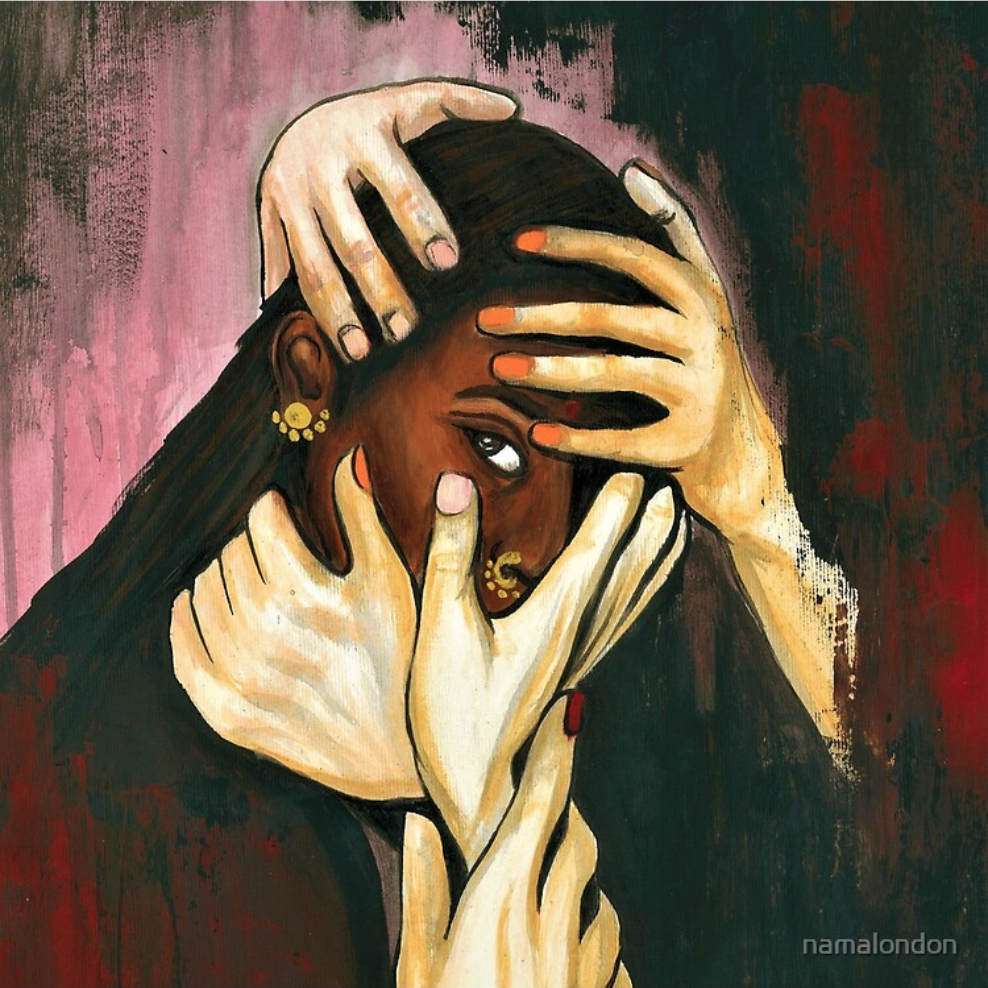There are persistent factors that not only confluence but also reinforce each other to generate the myth of beauty. One of the major costs of discrimination on the basis of appearance is the exacerbation of economic and racial inequality. Appearance both reflects and reinforces class privilege. Prevailing beauty standards disadvantage individuals who lack the time and money to invest in attractiveness. Fashion, makeup, health clubs, weight loss products, and cosmetic procedures all come at a cost. Discrimination based on weight is particularly problematic from a class standpoint.
STRUCTURES THAT REINFORCE THE MYTH OF BEAUTY
It is imperative to recall that the overall structure under which the ideas around beauty operate, is patriarchy: this works across cultures, borders, nations and regions. Intersectional ties, that give the myth of beauty different tinges, need to be pointed out, and will be be highlighted below.
Racism
Firstly, racism has a definite colonial underpinning which reinforces myth of colour superiority. While this can also be seen as the culmination of institutional prejudice, an instance of which can be considered the recent attacks on the Blacks in the US, India is not far behind. From marriage preferences, to Bollywood imaginations, this not only is reinforced, but is also centred around the “woman’’ or the “beautiful woman”.
Class
Secondly, the factor of Class. The media, advertisement, diet and figure ideals, film industry and social media trolls conflate to promote a standard idea of beauty through particular body types and privileged behaviour. Fairness creams, waxing kits and beauty soaps are highly exclusive, given the limited access across class and resources. Not everyone can afford such beauty service, not all can spare the time for gym. In a country where struggle for survival is a reality, every day, such standards of beauty can be nothing less than exclusionary, imported with an elite bias. The cosmetic and medicine industry are not behind in this race as these tend to profit manifold by playing to the galleries. Beauty jobs, subtle advices in dermatology, and plastic surgery have internalised this myth and the bias and set the medical procedures accordingly.
Consumerism
Thirdly, Consumerism. It is amazing the way consumerism stands at the foundation to support the workings of patriarchy to its benefit. Hence the union of capitalism with patriarchy results in the myth of beauty. How many times have we heard the introduction given to the winner of an award? Men’s introductions usually start with ‘the talented, the fantastic’. Whereas women are introduced as ‘the gorgeous, the beautiful, the talented’. This is not simply a statement. This is a reflection on what comprises of the most important quality when it comes to a woman. Now recall any standard matrimonial advertisement doing rounds of newspaper in India, ‘seeking a match for a bride: sundar aur susheel, the beautiful and the docile’ phenomenon!
THEORETICAL INSIGHTS
The discussion so far also brings to light that for some women, our cultural preoccupation with appearance is a source of wasted effort and expense, a threat to physical and psychological well-being, and a trigger for workplace discrimination. For other women, the pursuit of beauty is a source of pleasure and agency, and a showcase for cultural identity.
The question for the women’s movement is whether it is possible to find some common ground. To develop a concept of beauty that is a source of pleasure rather than shame, and that enhances, rather than dictates self-worth.
In The Beauty Myth, Naomi Wolf noted that women’s absorption with appearance “leeches money and leisure and confidence. Because women are held to unattainable ideals, their task is boundless. Almost all areas of the female body are in need of something. The result is to focus women’s attention on self-improvement rather than social action.”
BEAUTY- THE MOST IMPORTANT QUALITY FOR A WOMEN?
As secretary of state, when a man at a town hall meeting in Kyrgyzstan asked her which designers she wore, an exasperated Hillary Clinton responded, “Would you ever ask a man that question?”. Shortly after Marissa Mayer was appointed CEO of Yahoo, a Forbes article described her as “attractive, well coifed, and poised under pressure,” and described her reputation as the “hottest CEO ever,” and one of the “sexiest geek girls” of Silicone Valley. This accentuates how through our everyday language; we indulge in implicit violence taking this idea of beauty forward.
The songs in Bollywood, while are innumerable to list out here, a recent rap titled ‘Buzz’ , uses lines like “jahan se hona chahiye wahi se hai tu thick”- the motive being promoted through such lines is self-explanatory. Beauty standards, sexualisation of women’s appearances, and body shaming have become intrinsic to the way Bollywood perceives female characters. While this is just one song, there are numerous phrases, lyrics, songs and movies that normalise such derogatory tones with regards to women.
As new media and technology attempt to address aesthetic bias, racism, and sexism, we are not seeing any stop to the perpetuation of the myth of beauty. This then leaves us with the ultimate question- Can we criticize appearance-related practices, without criticizing the women who find them necessary, by identifying the underlying structure that works to reinforce patriarchy?


